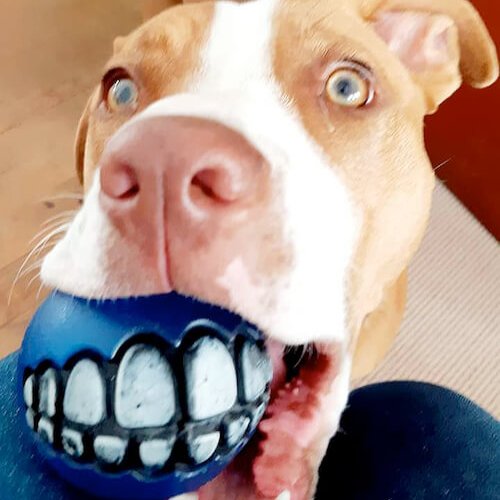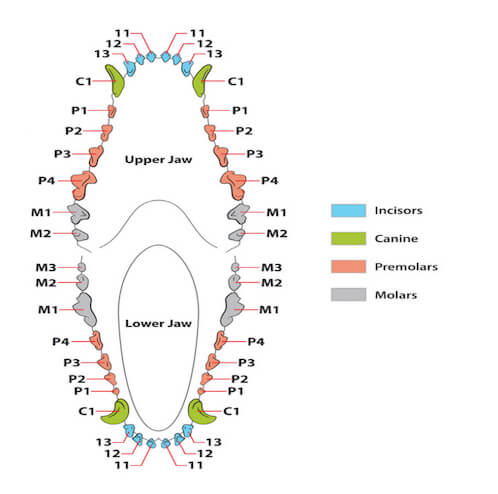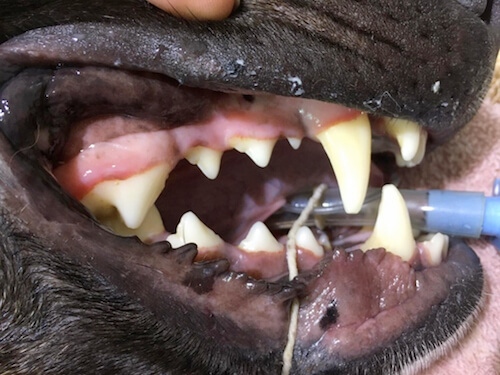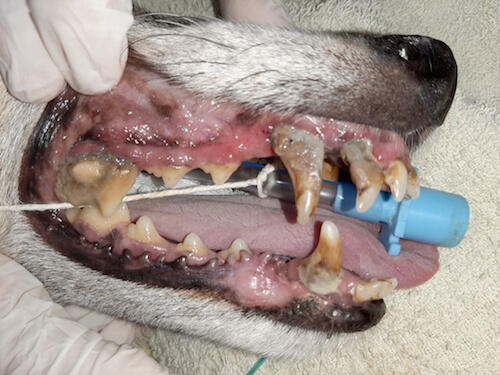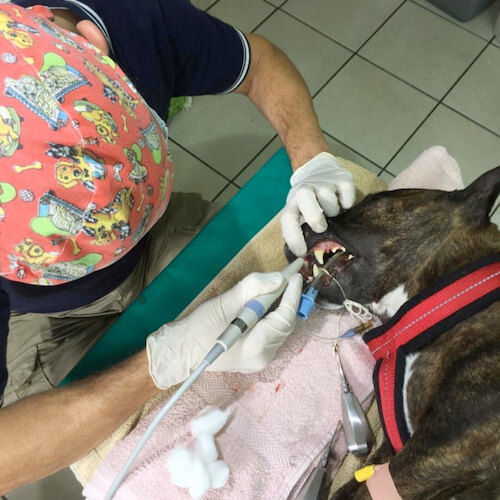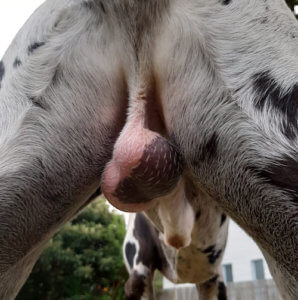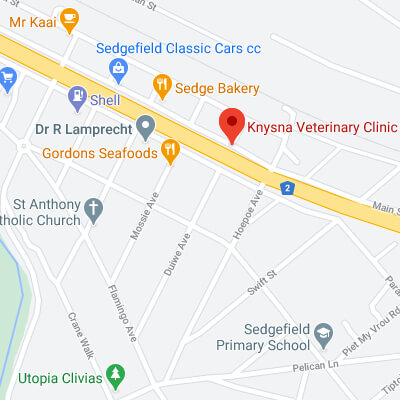Pearly whites, the kind that makes the tooth fairy smile, that’s what we’re talking about. Even our pets deserve a good, healthy set of gnashers.
In this article, we’re going to explain the layout of your pet’s teeth. Then we’ll cover some common pet tooth woes, and what to expect when you visit a vet for a dental check. We’ll finish up with some handy tips on how to prevent problems in your furry baby’s mouth.
This is how your pet’s mouth looks inside.
Puppies have a set of 28 sharp little teeth. They start teething at around 12 to 16 weeks of age, and end up with 42 teeth when they’re about 6 months old. Kittens have 26 tiny teeth, and 30 teeth as an adult cat.
There are incisors, at the front of the mouth, canines (the “fangs”), premolars, and molars far at the back.
In the dog and cat the “teeth formula” looks like this:
Dog: I[3/3/] ,C[1/1] ,P[4/4],M[2/3]=[3142/3143]x2 = 42
Cat: I[3/3] ,C[1/1] ,P[3/2] ,M[1/1]=[3131/3121] x2 = 30
This is what happens when your pet goes for a dental check.
During a routine dental check, your vet will have a good look at all the teeth, even those far-to-reach, back-in-the-mouth ones. In an adult, there should be no more deciduous or baby teeth still present. The teeth should be healthy white with no brown discolouration or tartar. If the gums are angry looking, inflamed, swollen, or even bleeding and painful on examination, it is a sure sign that there is gingivitis or gum disease also present.
Bacteria causes a ton of problems.
It is the bacteria in the plaque that causes that awful smell! Bad teeth not only cause an unpleasant breath (called halitosis), but from a medical point of view, bad teeth cause a bad heart and bad health. Don’t think they are just sitting there in a neat row to look pretty. A painful mouth might be an obvious reason to have them checked out. But before then, there can be bacteria from the plaque circulating the body, causing gum recession, tooth decay, and havoc to internal organs.
They can get tumors in the mouth.
Lumps and bumps can occur in your pet’s mouth as well. Any growths in the mouth are worth investigating early. Malignant tumours are difficult to remove. If a tumour is detected at its smallest, you have the best chance at a successful complete excision.
This is how we clean your pet’s teeth.
After a dental check, your vet may advise a dental procedure. Because our patients will not lie still with their mouths open, we have to rely on a general anaesthetic. We use an ultrasonic dental scaler to clean the teeth. We insert an inflatable tube down the trachea to prevent the water from the dental scaler being inhaled. After careful scaling, every tooth is examined. If gum recession is so severe that the tooth root is exposed beyond repair, a tooth is loose, or a tooth root abscess is detected, we may have to extract the diseased tooth. All healthy remaining teeth are then polished with a special toothpaste to smooth the surface of the teeth and prevent plaque building up. Unfortunately, without follow-up home dental care, plaque and tartar will eventually build up on the teeth again. The sooner the teeth can be cleaned, the better the chance of avoiding any tooth extraction.
Cats can struggle with painfully complicated tooth problems.
A fairly common condition in cats is FORL, or feline odontoclastic resorptive lesions. It mostly affects cats over 5 years of age. This is an extremely painful condition where the cat’s immune system overreacts to the plaque and attacks the tooth at the gum line. It may require the extraction of several teeth. Another painful mouth condition is stomatitis, or lymphocytic plasmacytic gingivitis pharyngitis syndrome – also suspected to be an immune-mediated disorder. Several treatment options are available here, and patients respond differently to different options.
Here’s how you can keep your pet’s teeth happy at home.
Some advise on home dental care you as pet parent can consider:
• The gold standard is brushing your pet’s teeth every day! Really, this IS doable. Ensure that the toothpaste is specifically formulated for use in dogs and cats.
• Antibacterial mouth rinses specifically formulated for pets keep mouth bacteria at bay.
• Dental chews in various forms and flavours work for pets who like to savour a chew, instead of just swallowing it down.
So end the suffering, get those teeth sorted, and you can both share a fresh, winning smile.


